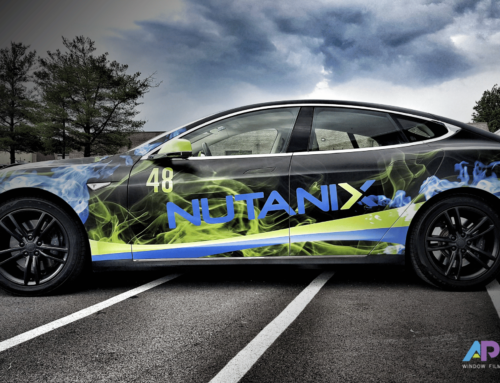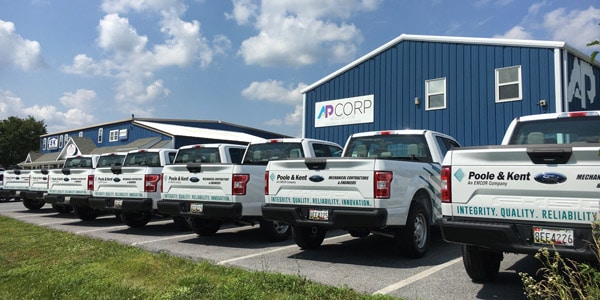
If you have a commercial fleet, you’re one of 200,000+ businesses of your kind in the US.
That might seem like a lot of competition.
But your fleet isn’t just a transportation asset — used correctly, it can make you money in more ways than one. Fleet wraps are a smart way to turn your vehicles into mobile advertisements and bring in more business than your competitors.
In this post, you’ll learn why and how to invest in fleet wraps. We’ll cover:
- Understanding How Fleet Wraps Boost Your Brand
- How Fleet Wraps Stack Up Against Other Advertising Methods
- How to Design Effective Fleet Wraps [Strategy Breakdown]
- How to Budget for Fleet Wraps to Maximize ROI
Heads up — if you want your fleet to start generating leads for your brand today, AP Graphics can help you get started. We’ve wrapped fleets of all shapes and sizes for years with the highest-quality designs and materials. Contact us today to get a quote or ask any questions!
Understanding How Fleet Wraps Boost Your Brand
Fleet wraps refer to the custom graphics or decals applied to a business’s vehicles, primarily for advertising purposes.
At a glance:
- Creating Mobile Billboards: Fleet wraps effectively convert your company’s vehicles into mobile billboards, advertising your brand wherever they go. This continuous exposure can significantly improve brand recognition.
- Reaching a Wider Audience: As your vehicles travel, they expose your brand to a larger and more diverse audience than traditional advertising formats, potentially resulting in an increased customer base.
- Cost-Effective Marketing: Once installed, fleet wraps can last several years, offering continuous marketing presence at a fraction of the cost of other advertising methods.
- Boosting Brand Image: Professionally designed fleet wraps can enhance your brand’s image, presenting your business as established and reputable.
- Custom Advertising: Fleet wraps can be customized to reflect your brand’s unique identity, ensuring your marketing message aligns with your business’s goals and values.
- High Impact Advertising: Given their size and mobility, fleet wraps are hard to ignore, making them an effective tool for capturing the attention of potential customers and standing out from the competition.
Some common use cases for fleet wraps include:
- Delivery companies: Larger delivery companies often have a large fleet of vehicles, making fleet wraps an ideal advertising solution to reach a wide audience.
- Service-based businesses: Plumbers, electricians, and other service-based businesses can benefit from fleet wraps as they travel to various locations throughout the day, exposing their brand to potential customers in different areas.
- Food trucks: Food trucks rely on their vehicles to transport their business and serve as a form of advertising. A well-designed fleet wrap can attract customers and make a lasting impression.
- Transportation companies: Bus, taxi, and shuttle services can use fleet wraps to showcase their brand while providing transportation services to customers.
- Construction companies: With their large trucks and heavy-duty equipment, construction companies can use fleet wraps to showcase their brand and services while on job sites.
How Do Fleet Wraps Stack Up Against Other Ad Methods?
When it comes to CPM, vehicle wraps have every other out-of-home advertising method beat:
- Vehicle wrap: $0.48 to $0.77
- Billboard: $2.18 to $3.56
- Magazine: $9.35 to $21.46
- Newspaper: $16.77 to $19.70
And that isn’t its only advantage over other advertising strategies.
- Recurring vs. One-time Expenses: While traditional advertising methods, such as newspaper ads or billboards, often require continual payments for placement, fleet wraps only require a one-time investment.
- Longevity: Unlike TV or radio commercials that air for a limited time, fleet wraps can last for several years without additional costs, providing long-term exposure and brand recognition.
- Targeted Advertising: With fleet wraps, you have complete control over where and when your brand is seen. This allows for targeted advertising to a specific geographic area or demographic, increasing the chances of reaching potential customers.
- Higher Reach: Compared to other forms of advertising that only target a specific audience, fleet wraps are constantly on the move, exposing your brand to a wider and more diverse audience.
- Eco-Friendly: Unlike some forms of outdoor advertising, such as billboards or posters, fleet wraps do not require the use of paper or other materials that contribute to environmental waste. This makes them a more sustainable option for businesses looking to reduce their carbon footprint.
- Versatility: While fleet wraps are commonly used on company vehicles, they can also be applied to other forms of transportation, such as buses, trains, and boats. This versatility allows for a wider reach and exposure to different audiences.
Clearly, wraps are some of the best OOH advertising strategies out there — but how should you design them for your fleet? Let’s break it down:
How to Design Effective Fleet Wraps [Strategy Breakdown]
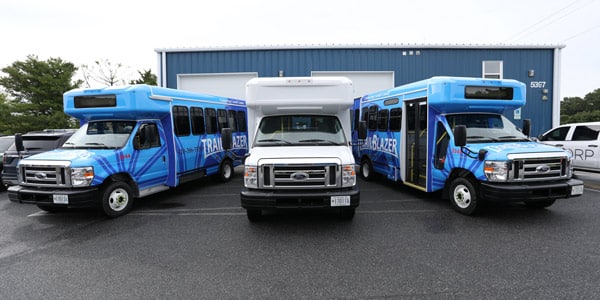
4 Principles of Eye-Catching Fleet Wrap Design
Designing a winning wrap design is complex but not impossible. Here are some tips from our own experience:
- Simplicity is Key: An effective fleet wrap design should avoid unnecessary clutter. Stick to essential information like your business name, logo, and contact details. Remember, your vehicle is likely to be on the move, and potential customers may only catch a quick glimpse.
- Brand Consistency: Ensure the design of your fleet wrap is consistent with your brand’s overall look and feel. This includes consistent use of logos, colors, and typography. This aids in reinforcing your brand identity and aids in recognition.
- High-Quality Images: This might seem obvious, but if you incorporate images into your fleet wrap design, ensure they are high-resolution and visually striking. Blurry or pixelated images can detract from your message and appear unprofessional.
- Legible Typography: Choose fonts that are easily read from a distance and at high speeds. Avoid overly decorative fonts, and ensure the font size is large enough to be easily seen by drivers and pedestrians.
Let’s zoom out — it’s time to incorporate your brand.
3 Ways to Convey Brand Messaging Through Fleet Wraps Like a Pro Marketer
Brand message is an essential part of your design — communicate the wrong thing, and your campaign falls flat. Here’s how to avoid that:
- Clarity of Message: The primary aim of your fleet wrap is to convey your brand’s message. Therefore, it must be clear, concise, and direct. Avoid industry jargon or complex language as this can alienate potential customers. Instead, use simple, easily understood language that succinctly communicates your brand’s value proposition.
- Call to Action: Encourage interaction by including a clear call-to-action (CTA) in your fleet wrap design. This could be your company’s website, a phone number, or a simple instruction like ‘Follow us on social media’. A good CTA can provoke curiosity and drive engagement, helping to convert passing interest into active inquiries.
- Consistent Updates: To keep your brand message fresh and engaging, consider updating your fleet wrap designs periodically. This doesn’t necessarily mean a complete design overhaul – even subtle changes like updating images or altering your CTA can keep your brand message interesting and relevant. Remember though, any updates should still align with your overall brand aesthetic and messaging strategy.
Cover all of these points, and you’ll have a winning design.
Using Templates vs. Custom Designs: Pros and Cons
For fleet wrap designs, there are two main options to consider: templates and custom designs. Both approaches have their advantages and disadvantages.
Templates:
Pros:
- Cost-Effective: Templates often come at a lower cost than custom designs, making them an affordable option for businesses on a budget.
- Speed: Since templates are pre-made, they can be quickly applied to your fleet, saving you time in the design process.
Cons:
- Lack of Originality: Templates are not unique, meaning other companies may have similar designs, which can dilute your brand’s impact.
- Limited Customisation: With a template, you have less freedom to tailor the design to your brand’s specific needs and aesthetics.
Custom Designs:
Pros:
- Uniqueness: Custom designs are one-of-a-kind, which can make your fleet stand out and enhance your brand recognition.
- Flexibility: Custom designs allow you to include specific elements that align with your brand’s identity and message.
Cons:
- Cost: Custom designs are typically more expensive than templates, which may be challenging for smaller businesses or those with tighter budgets.
- Time-Consuming: Creating a custom design can be time-consuming, as it involves more planning and revisions to get the design just right.
It’s crucial to weigh these pros and cons when deciding which approach to take for your fleet wraps. The key is to choose the method that best aligns with your brand’s objectives, budget, and timeline.
How to Budget for Fleet Wraps to Maximize ROI
Here are some of the cost buckets to keep in mind as you get your vehicle fleet wrapped:
- Design: Whether you opt for a template or a custom design, there will be a cost associated with creating the initial design. Templates are more affordable, while custom designs can be more expensive due to the labor and time involved.
- Material: The actual wrap material is a significant portion of the budget. The cost will depend on the quality of the wrap you choose and the size of your fleet.
- Printing: After finalizing the design, it must be printed onto the wrap material. The price can vary based on the complexity of the design and the amount of ink required.
- Installation: The wrap must be professionally installed on each vehicle in your fleet. The cost can vary depending on the size and shape of the vehicles.
- Maintenance: Over time, wraps may need to be repaired or replaced due to wear and tear. It’s important to budget for these ongoing maintenance costs.
- Removal: If you decide to change the wraps or sell the vehicles, you may incur costs for professional removal of the wraps.
For a more in-depth understanding of how commercial vehicle wrappings work, read our post on the subject.
Factors Affecting Fleet Wrap Pricing
Several factors can affect the overall cost of fleet wraps:
- Material: The quality of the wrap material significantly influences the price. Higher quality materials are more durable and offer better aesthetics but come at a higher cost.
- Vehicle Size: The size and type of the vehicle also play a role in the cost. Larger vehicles require more material and labor for installation, driving the cost up.
- Design Complexity: The complexity of the design is another factor. A simple design with few colors will cost less than a complex design with many colors or intricate patterns. The level of detail required in the design can also increase the cost.
- Number of Vehicles: The number of wrapped vehicles will influence the total cost. Wrapping a large fleet may come with a volume discount, but the overall cost will still be substantial.
- Geographical Location: The cost can also vary depending on your location. Areas with a higher cost of living may have higher prices for fleet wrap services. (If you’re in Maryland, DC, or Virginia, visit AP Graphics for a free quote).
Remember, it’s important not to compromise on quality, as a poor-quality wrap could damage your brand’s image and cost more in the long run due to frequent replacements.
Tips for Budgeting Effectively for a Fleet Wrap Project
To manage your finances effectively for a fleet wrap project, consider the following tips:
- Prioritise Quality Over Cost: It might be tempting to opt for cheaper, lower-quality materials to save on initial costs. However, in the long run, these could end up costing more due to frequent replacement and potential damage to your vehicles.
- Plan Ahead: Knowing your design and the number of vehicles to be wrapped ahead of time can help you create a more accurate budget. Changes to the plan midway can lead to increased costs.
- Consider the Size and Type of Your Vehicles: Larger vehicles will require more materials and labor, so factor this into your budget from the start. If your fleet contains different types of vehicles, consider that the cost of wrapping each type may vary.
- Get Quotes from Multiple Providers: This will help you understand the market price and allow you to choose the most cost-effective option.
- Include Maintenance and Removal Costs: Don’t forget to budget for the potential cost of wrap maintenance and removal. These are often overlooked but can add significantly to the project’s total cost.
Budgeting well for your fleet wrap project can help ensure its success, and protect your company’s financial health at the same time.
Elevate Your Brand Beyond the Competition With a Fleet Wrapping From AP Graphics
Here are some key takeaways from this guide:
- Consider Branding and Design: Fleet wraps should reflect your brand’s unique identity, ensuring your marketing message aligns with your business’s goals and values, with an emphasis on simplicity, clarity, and legibility.
- Analyze Costs and Material Choices: Budgeting for fleet wraps involves considering the cost of design, material, printing, installation, and maintenance, emphasizing quality over cost to ensure longevity and effectiveness.
- Evaluate Advertising Effectiveness: Fleet wraps offer a cost-effective marketing solution with a high ROI, as they turn vehicles into mobile billboards, reaching a wider audience than traditional advertising methods.
Fleet wraps are not just an aesthetic enhancement, they serve as a strategic marketing tool capable of elevating your brand visibility and ROI.
With a fleet wrapping from AP Graphics, every journey your vehicles embark on becomes an opportunity to broadcast your brand to hundreds, potentially thousands, of potential customers. In a world clamoring for attention, fleet wraps work 24/7 to promote your business.
Get in touch for a free quote today to see what vehicle wrapping can do for your brand!

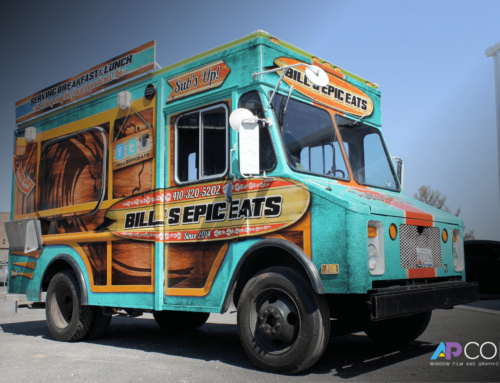
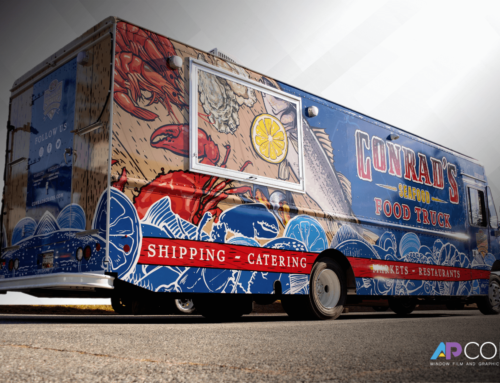
![The 5 Best Custom Car Wraps Virginia Has To Offer [Reviewed]](https://www.vehiclewrapping.com/wp-content/uploads/2024/02/Custom-Car-Wraps-500x383.png)
